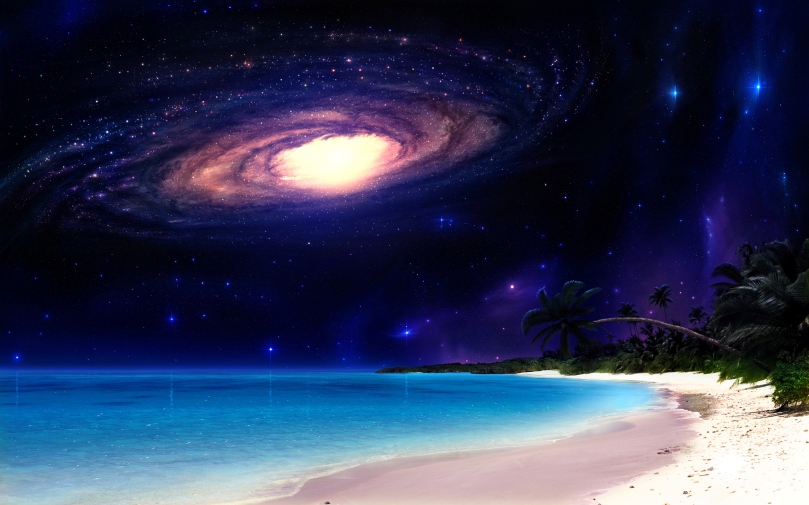CONTACT (1997)
directed by Robert Zemeckis
INTERSTELLAR (2014)
directed by Christopher Nolan
I have some admiration for films that push beyond the limits of human inquiry and try to depict what we cannot possibly know. The obvious yardstick is Stanley Kubrick’s 2001: A Space Odyssey and its JUPITER AND BEYOND THE INFINITE sequence, which demonstrates that in the hands of a skilled auteur, the foundations of science can be used as a jumping-off point for a totally captivating flight of imagination.
Interstellar is the latest big-budget film to step outside the scientific canvas and into the realms of theory. The much-maligned ‘book thing in space’, as one friend called it, may be overly emotionally wrought but it is impressive for its commitment to its central ideas:
- The event horizon of a singularity may conceal a five-dimensional tesseract in which the usual laws of the universe (as we understand them) do not apply.
- Gravity can be harnessed as an instantaneous fifth-dimensional communication tool.
Because Nolan’s vision is founded on deeply researched scientific principles, rather than on a screenwriter’s rabbit from a hat, it is compelling enough to feel as though it might be true. It also needs strong visuals to bring it to life, which it has in spades given the budget — although the shots of the singularity before Cooper crosses it are considerably more impressive and kind of a shame to leave behind.
The other key ingredient is a lead actor who can sell something so fanciful. Fortunately, Nolan has Matthew McConaughey, one of the better A-list actors of our time (now that people are taking him seriously again). McConaughey — and the script — lay the ground work throughout the film for the broad emotional payoff in the tesseract as Cooper finally reconnects with his estranged daughter Murph in an entirely new medium. We have seen Cooper and Murph’s previously tight bond unravel in clearly defined stages over the course of Interstellar; after all that, you can feel Cooper’s desperation, and the tears streaming down McConaughey’s face feel wrought from deep psychological pain.
McConaughey has been there before, of course — well, he’s nearly been there. He played Palmer Joss, the love interest and theologian rival to Jodie Foster’s scientist lead Ellie Arroway, in the superior Contact. Zemeckis’ film is heavier on philosophical debate than Nolan’s more family-focused opus, though it is no less earnest. And when it finally takes a trip down the wormhole, it follows the same tack as Interstellar in using it to address the protagonist’s deepest psychological trauma — in Arroway’s case, the death of her father when she was a child.
The science behind the wormholes in Contact is mostly unexplained and far more speculative than that in Interstellar, and therefore less sound. The script, adapted from a Carl Sagan novel, seems content to leave Arroway — and the human race — as the unknowing beneficiary of alien intelligence. In some ways, this is better; rather than muddying our view with intangible theories and concepts, Zemeckis just presents the wormhole experience and lets it wash over you. However, it leaves you with less to mull over afterwards. (And fewer clickbait thinkpieces that attempt to explain what really happened.)
Where Contact‘s journey beyond the infinite surpasses Interstellar‘s is in its visuals, which are more striking and head-trippy even though they were completed nearly twenty years before, and in its lead actor. McConaughey portrays Cooper’s emotional crescendo just fine, but Foster throws herself into the green screen with all of her considerable acting might. The climax follows nearly two hours of build-up, during which we are invited to question whether we have more in common with Arroway’s dedication to empirical evidence or Joss’ religious conviction, and indeed, whether the difference between their respective faiths is so great. And when Arroway disappears beyond the void, she is frantic, sceptical, lost for words, and in rapture. She is caught between her relief of grasping what she had long yearned for and her desire for the experience not to end. She makes the unfathomable bright lights real.
The effects are wonderful, but it’s Foster that sells it — every moment of it. Later, she delivers a stunning monologue when trying to explain her experience to a Senate inquiry, holding the crowd (and viewer) spellbound regardless of whether or not they believe her. It goes to show that with good dialogue and a great actor, you can make almost anything seem possible.

